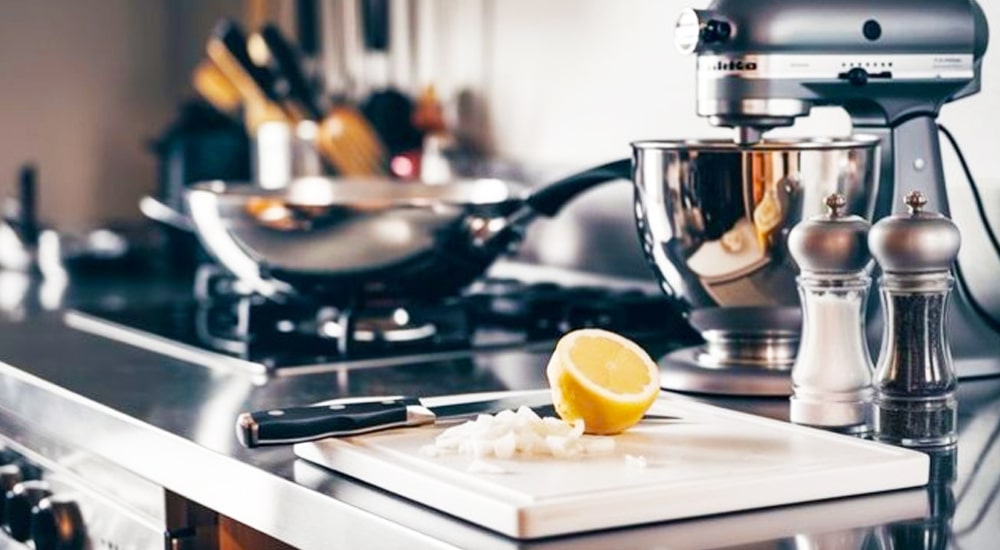
When it comes to versatile kitchen cookware, few tools compare to the stainless steel wok. Known for its wide, concave shape and deep sides, the wok is traditionally associated with Asian cuisine, particularly stir-frying. However, the stainless steel wok has gained popularity worldwide due to its durability, adaptability, and the wide range of cooking techniques it accommodates. This article will explore the benefits, uses, and maintenance tips for a stainless steel wok, making the case for why this piece of cookware is a valuable addition to any kitchen.
Benefits of a Stainless Steel Wok
- Durability and Longevity : Stainless steel is renowned for its durability and resistance to rust, corrosion, and staining. Unlike non-stick woks, which may require frequent replacement as their coating deteriorates, a well-cared-for stainless steel wok can last for decades. Its robust construction allows it to withstand high heat, making it suitable for various cooking methods without warping or losing shape. Stainless steel also resists scratching, allowing cooks to use metal utensils without worrying about damaging the surface.
- Versatility in Cooking : While stir-frying is perhaps the most popular use for a wok, a stainless steel wok is versatile enough to handle many other cooking techniques. Thanks to its high sides and wide base, a stainless steel wok can be used for deep-frying, steaming, poaching, boiling, braising, and even smoking food. The flat-bottomed versions are particularly suitable for modern stovetops, including induction cooktops. This versatility makes it a valuable all-in-one tool in the kitchen, helping to streamline meal preparation.
- Excellent Heat Distribution : Stainless steel woks often have a multi-layered design that includes an aluminum or copper core. These metals are excellent conductors of heat, ensuring that the wok heats up evenly across the entire cooking surface. This even heat distribution is essential in stir-frying, where quick cooking at high temperatures is needed to lock in flavors and retain the nutritional value of ingredients. With a stainless steel wok, there are fewer "hot spots," which can lead to more consistent and well-cooked dishes.
- Healthier Cooking Option : Unlike non-stick cookware, which can release harmful chemicals when overheated, a stainless steel wok is a safer option for high-heat cooking. Stainless steel is a non-reactive metal, meaning it won’t leach chemicals or alter the flavor of acidic ingredients. This is how the Stainless Steel Wok.
- Easy Maintenance : Although some might think that stainless steel requires more maintenance than non-stick cookware, it’s relatively easy to clean. Stainless steel woks are typically dishwasher-safe, though hand washing is recommended to preserve their shine and longevity. For tougher food residues, a bit of elbow grease with a non-abrasive scrubber will usually do the trick. Additionally, stainless steel does not require seasoning, unlike traditional carbon steel or cast iron woks.
How to Use a Stainless Steel Wok
Using a stainless steel wok is straightforward, but there are a few tips to get the best results:
- Preheat the Wok Properly: Stainless steel doesn’t have a natural non-stick coating, so preheating the wok before adding oil is crucial. Heat it on medium-high until a drop of water sizzles and evaporates instantly. Then, add your oil and allow it to get hot before adding ingredients to prevent sticking.
- Use the Right Amount of Oil: While stainless steel woks don’t require as much oil as some other materials, using a small amount helps prevent sticking and facilitates even cooking. Swirl the oil around to coat the sides of the wok.
- Avoid Overcrowding: When stir-frying, avoid adding too many ingredients at once. Overcrowding can reduce the wok’s temperature, leading to steaming rather than frying. Cooking in small batches will yield better results.
- Experiment with Cooking Techniques: While stir-frying is the wok’s strong suit, don’t be afraid to try other techniques like steaming or deep-frying. Stainless steel’s adaptability allows you to experiment and expand your cooking repertoire.
Caring for Your Stainless Steel Wok
- Cleaning Tips: After each use, allow the wok to cool slightly before washing. Use warm, soapy water and a soft sponge to clean. For stubborn residues, soaking the wok briefly or using a mixture of baking soda and water can help lift any remaining particles.
- Avoid Abrasive Tools: While stainless steel is tough, avoid using steel wool or other abrasive materials that could scratch the surface. A non-abrasive scrubber or sponge works best.
- Polish Regularly: To keep your wok looking pristine, polish it occasionally with a mixture of vinegar and water or a stainless steel cleaner to remove any stains or discoloration that may occur over time.
Conclusion
A stainless steel wok is a highly versatile, durable, and reliable addition to any kitchen. Its ability to handle a range of cooking techniques and its compatibility with various cooktops make it an excellent investment. Not only does it offer an efficient cooking experience, but it also provides a healthier, chemical-free alternative for high-heat cooking. With proper care, a stainless steel wok can be a long-lasting kitchen companion, helping you create delicious and varied meals with ease. We are available on flipkart and amazon.





